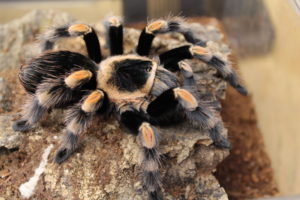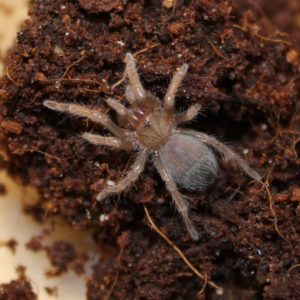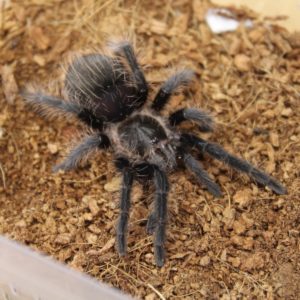Copyright 2021 Evolution Reptiles
All rights reserved.
Copyright 2025 Evolution Reptiles
All rights reserved.
All rights reserved.
Brachypelma spiders are tarantulas, which is to say that they are a group of species that belong to Theraphosidae family. ‘Tarantula’ originally meant the wolf spider Lycosa tarantula, native to the Mediterranean region and named after the Italian village of Taranto. New World Theraphosids (from the Americas rather than Europe or Asia) all possess urticating hairs that can be kicked off if the spider is feeling threatened; these have no toxins on them, but will shatter like glass and stick in the skin, causing intense itching and burning. If inhaled they can cause damage to the delicate membranes of the mouth and nose, and if they lodge in the eyes it can cause serious damage.
Generally, they are amiable and simple to keep in captivity; like all animals, they can be nervous as babies and somewhat prone to hair flicking but tend to grow out of it. The hairs are only replaced when the spider moults, so if your spider has a bald bottom it often indicates an irritable nature!

Whilst this entire group are recommended as good spiders for the beginner keeper, the one that makes the best pet would have to be the curly hair, Brachypelma albospilosum. They take calm and docile to another level, which makes them much easier to manage even if you’re a little unsure. Of course, even if they are as calm as the curly hair we do not recommend that you handle any spider. Should they fall from your hands and become injured they bleed to death very rapidly – they do not have blood like we do, or even blood vessels – not to mention the risk to you of those itchy hairs.
Brachypelma spiders are very popular as pets due to their large size, calm nature, and often bright colours. Common species are Brachypelma albiceps (Mexican Golden Red Rump), B. annitha (Mexican Giant Orange Knee), B. auratum (Mexican Flame Knee), B. emilia (Mexican Red Leg), B. hamorii (Mexican Red Knee), B.smithi (Giant Orange knee)
These spiders below were moved from Brachypelma to Tliltocatl in 2020
Tliltocatl albospilosum (Curly Hair),T. klaasi (Mexican Pink), T. schroederi (Mexican Black Velvet), T. vagans (Mexican Red Rump), and T. verdezi (Mexican Rose Grey).

As a group they are terrestrial and live in burrows, with an entrance just a little wider than the spider itself leading to two chambers, one of which is used for moulting and one that is used for resting and feeding. The Brachypelma species are mostly found in Mexico, with four species found further South in Central America.
The eighteen species that make up the Brachypelma genus are divided into two groups, red rump and red leg, with the red leg group in most need of further conservation in the wild. Although all species of Brachypelma are protected across their native ranges, and trade is controlled under CITES (the Convention on International Trade in Endangered Species), habitat loss is an enormous problem that is not easily solved.

Like all spiders, Brachypelma tarantulas are venomous. This venom is not regarded as ‘medically significant’ like that of many of the Old World tarantulas (those from Africa, Asia and Europe) but it does cause pain and swelling. The best way to avoid a bite is not to handle your spider, which also keeps you safe from the itchy hairs!
Lifespan is very variable, with the females living significantly longer than the boys. Maturity is reached by the age of 10, and in the wild females will live another 10 years, although the males will only live for a single breeding season. In captivity females have been recorded at over 20 years, with the longest living male only getting to 3.
Copyright 2021 Evolution Reptiles
All rights reserved.